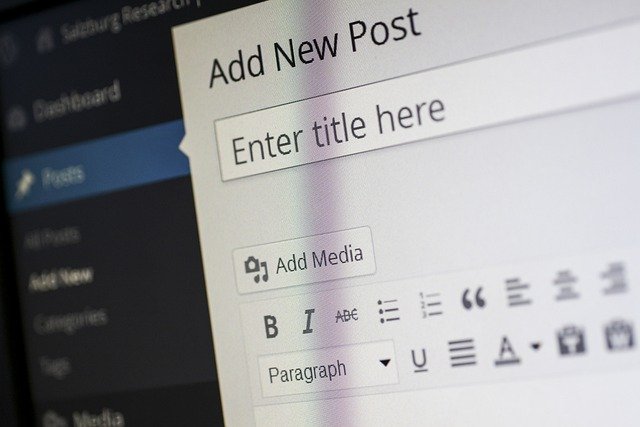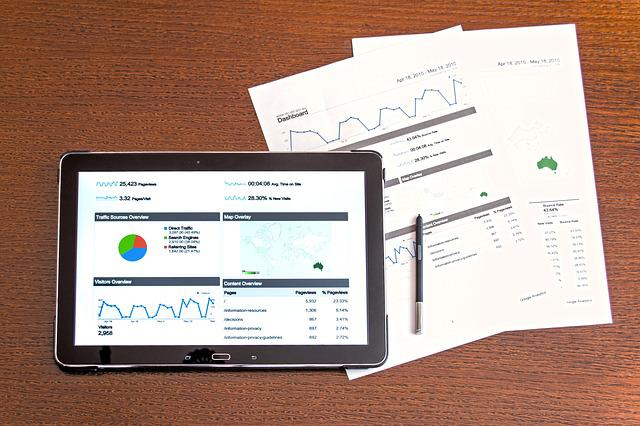Traditional higher education recruiting methods remain popular, but they’re difficult for marketers to measure and easy for prospective students to overlook.

Inbound marketing is an affordable way to reach students and track your institution’s ROI, from the prospect’s first visit to your website to the moment they submit their application.
Let’s discuss the definition of inbound marketing, why college marketing teams should use this methodology, and how to implement a higher education inbound recruiting plan.
What is Higher Education Inbound Marketing?
Inbound marketing and direct marketing can be difficult to compare because each serves different purposes in life, but here is a way for you to better understand the differences.
For years, recruiters contacted potential students by visiting high schools and hosting college fairs, as well as sending information by mail and advertising on bulletin boards and radio.

Marketers followed six stages of the traditional higher education enrolment funnel: Leads, Inquiries, Applicants, Admissions, Deposits, Enrollments, and Retention.
In the digital age, future students have more power. They don’t have to wait for the information to reach them: they do their research on laptops, tablets, and smartphones.
Moreover, it is not just high school students who seek educational opportunities. Working adults continue to learn new skills to advance in their careers, and you probably won’t find them at a high school college fair anytime soon.
With inbound marketing, recruiters meet potential students and their families where they are in the buyer’s journey on the digital channels, they use with the content they seek.

An inbound marketing funnel for higher education is more like a sales and marketing funnel, which consists of four stages: attract, convert, nurture, and close.
Why do I need a Higher Education Inbound Digital Marketing Strategy?
Recruiters face increased competition from other educational institutions and increased pressure to meet their organization’s enrolment goals.
As tuition fees rise, prospective students are also looking for free or alternative forms of education. Outbound marketing just isn’t as effective anymore because it’s easy for the target audience to ignore and hard for recruiters to follow up and adjust if necessary.

HubSpot offers data that proves the value of inbound marketing in higher education. According to The Ultimate Guide to Inbound Marketing for Schools, colleges that implement inbound marketing are seven times more likely to report higher ROI than colleges that rely on outbound marketing methods.
Inbound leads and candidates are also three times more qualified than leads captured through an outbound approach.
Recruitment trends in higher education
Today’s prospective students have many expectations of the college experience. Recruiters need to meet them where they are in the digital world and deliver.
Higher education marketing efforts should include providing virtual tours, answering questions through content, and having an active social media presence.

Prospective students spend a lot of time online because they crave connection. Implementing segmented messaging and conversational marketing into your marketing strategy appeals to their need for personalization. Talking about their weak points and answering their objections makes prospective students feel more like humans than numbers.
Recruiters can benefit from inbound enrolment marketing because it allows them to make data-driven decisions and adjust their strategies as trends change.
While the outbound method relies on spreading materials and hoping for the best, the inbound method provides more definitive answers about what works and what doesn’t.
How to Start Higher Education Inbound Marketing
To start an inbound marketing strategy in higher education, recruiters need to look at the content they already have and gauge the results they’re getting.
Data analysis
As a recruiter, you need to know the characteristics of your prospective students, why they visit your website and social media accounts, and what information engages them.
Identify your target audience by reviewing your registration data in your customer relationship management (CRM) system to look for similarities in demographics and other statistics. Check your website analytics for information on traffic sources and keywords.

Examine the results of your paid campaigns such as pay-per-click (PPC) to understand which actions drove the most engagement and conversions. Evaluate social media to find out what is being said about your higher education institution and who is saying it.
With this data, you can create your ideal student personas, produce content that appeals to every stage of their journey, and create Key Performance Indicators (KPIs) to track your progress with metrics.
Content Optimization
You might not have to start from scratch with all the new content. Look at the information you already offer on your website and improve it with search engine optimization (SEO). Once you’ve made your existing content SEO-friendly, create new content based on potential student questions you haven’t answered yet and optimize accordingly.

By monitoring the optimization of your content as well as the functionality of your website, you will ensure that your institution appears when prospective students search. Additionally, they will have a positive user experience with respect to speed, structure, navigation, and value.
Content Promotion
Now that you’ve optimized existing assets and created new content, you can get your message out to more people and set up social media for greater visibility.
Focus on inserting keywords into the content, title, and caption of your social media posts. Be sure to follow ADA compliance with proper meta titles, meta descriptions, and alt tags.
Designate a person to manage your accounts to keep content marketing cohesive and consistent. Track your posts to measure what resonates with your audience.
The Higher Education Inbound Marketing Funnel
Let’s now review the higher education inbound marketing funnel and see how various forms of content fit into the potential student’s journey.
Attract
In the beginning, the goal is to attract the ideal students to your institution through brand awareness. Content such as blogs, case studies, and social media posts focused on keywords and SEO can increase organic traffic to your website and improve your lead generation efforts.

Convert
Conversion happens once you’ve gained credibility through valuable content. Your future students are now ready to act. Offer an e-book, white paper, or webinar that delves deeper into a topic in exchange for contact information. Create landing pages for these offers that include calls to action and lead generation forms.
Nurture
The development stage focuses on personalized communication. Use marketing automation to set up email workflows that meet the needs and interests of the potential student.
Segment this information based on personality. By providing the right targeted content at this stage, you will be one step closer to turning potential students into new students.
Close
When your email nurturing campaigns are effective, potential students will apply to your institution. At this point, your marketing plan initiatives have helped them through every step of the decision-making process, and they’ll be ready to enroll once they’re accepted. Congratulations, you have just completed a successful inbound marketing campaign.

How to Increase Enrolment in Higher Education
If you’re ready to implement an inbound approach, a higher education digital marketing agency can help you with services like content strategy.
With O8’s guidance, you’ll be able to reach more of your ideal potential students through proven digital marketing tactics in higher education.

![Higher Education Marketing 2023 and Beyond [Detailed Analysis], Higher Education Marketing, Education Marketing, Education PR, Digital PR, Public Relations, Digital Marketing, social media, SEO for Higher Education, Digital Marketing for Higher Education](https://firdoshkhan.in/wp-content/uploads/2022/11/Online-Program-Higher-Education-Markrting--300x200.jpg)

Pingback: What is Higher Education Marketing?
Pingback: 4 Best Digital Marketing Strategies for Online Universities
Pingback: How Does Inbound Marketing Benefit Higher Education?